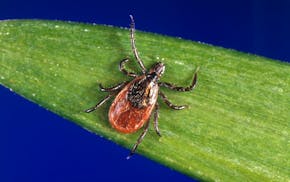Opinion editor's note: Star Tribune Opinion publishes a mix of national and local commentaries online and in print each day. To contribute, click here.
You'd think we would have learned, after a Starbucks on Marshall and Snelling Avenues in St. Paul was approved on flawed traffic data and generated years of traffic headaches, that the city would be more thoughtful in approving new development. But maybe not, at least not yet.
One can't help being reminded of the painful Starbucks lesson when examining the environmental assessment worksheet (EAW) provided by the University of St. Thomas for its new sports arena. The proposed arena is shoehorned onto a crowded site on the school's south campus. The site could hardly be less appropriate for the demands of a sports arena. Not only is there no breathing room around the building for practical services, but its location will cause massive, regular traffic disruptions and parking headaches for students, neighbors, faculty and eventgoers alike.
The traffic analysis in the EAW is woefully inadequate.
The traffic study provided by the university underestimates the ever-increasing traffic volume due to the nearby Highland Bridge residential and commercial development site. It does not consider the impacts or the safety impact of the thousands of pedestrians crossing Cretin Avenue before and after games. Or the risks to pedestrians at an uncontrolled intersection at Cretin and Mississippi River Blvd.
The university's study does not project for what it calls "other events" in its calculations, but acknowledges at least three different types of "other events": commencements, high school/youth sports and conventions. It fails to mention concerts, a cash cow. The EAW acknowledges no impact from these unaccounted-for rental events, some of which could draw as many as 6,000 seated or 7,000 standing when the arena floor is open. The study does not discuss the potential for concurrent campus events.
Furthermore, the study fails to address the effects of the cramped service road ringing the arena. Backups there will inhibit traffic on Cretin as fleets of team buses and support vehicles, service vehicles, security and emergency vehicles, garbage trucks, food service and event vendors all vie for position. Nor does the study address where these service and support vehicles will park during a game, or even while waiting to enter the service lane.
Also, the EAW parking counts were skewed, made during a snowstorm with limited cars on the street. Parking maps do not acknowledge bumper-to-bumper parking that exists nearby already, due to high-rise apartment buildings. The study does not consider constricted traffic flow, during typical Minnesota winter conditions, when one-side-of-the-street parking is in place. Nor does it consider the lack of street parking during those same winter conditions, a time of year also known as "hockey and basketball season."
Sadly, there has been little transparency from an institution whose altruistic tagline reads: "All for the Common Good." The University of St. Thomas has not been forthcoming (with neighbors, students or faculty, or in public forums) regarding the impacts of the arena. Its walkability claims are misleading, because more than two-thirds of UST students and faculty commute. They will drive and park (like everyone else) in order to walk from campus. Even the university's inventory of available campus parking is a shell game of pre-committed permit parking. Besides the 250-plus spaces eliminated on the arena site, the university just created 90 additional commuters by default from the displaced students in Cretin Hall, which is being demolished.
Advocates for Responsible Development (ARD), a 501(c)(3) nonprofit, is taking legal action before the Minnesota Court of Appeals to demand a thorough environmental impact statement (EIS) is completed before the city approves any plan for the arena site.
It is hard to imagine a more prescient example, to warn against the transportation "arenageddon" in the making, than the Starbucks drive-thru. Let's use that model of flawed data to learn from our mistakes of trying to do too much with too little room.
As a newly minted Division 1 school, the University of St. Thomas will certainly continue to grow. It cannot effectively do that without expanding its footprint. It should site this arena in an altogether different location, as the centerpiece of a brand-new campus, that will continue to accommodate its team sports goals, and future expansion plans, for years to come.
Steve Sikora lives in St. Paul.

Kudos to St. Cloud's longtime mayor
Readers Write: Ethnic studies curriculum, public notice laws, student protests


